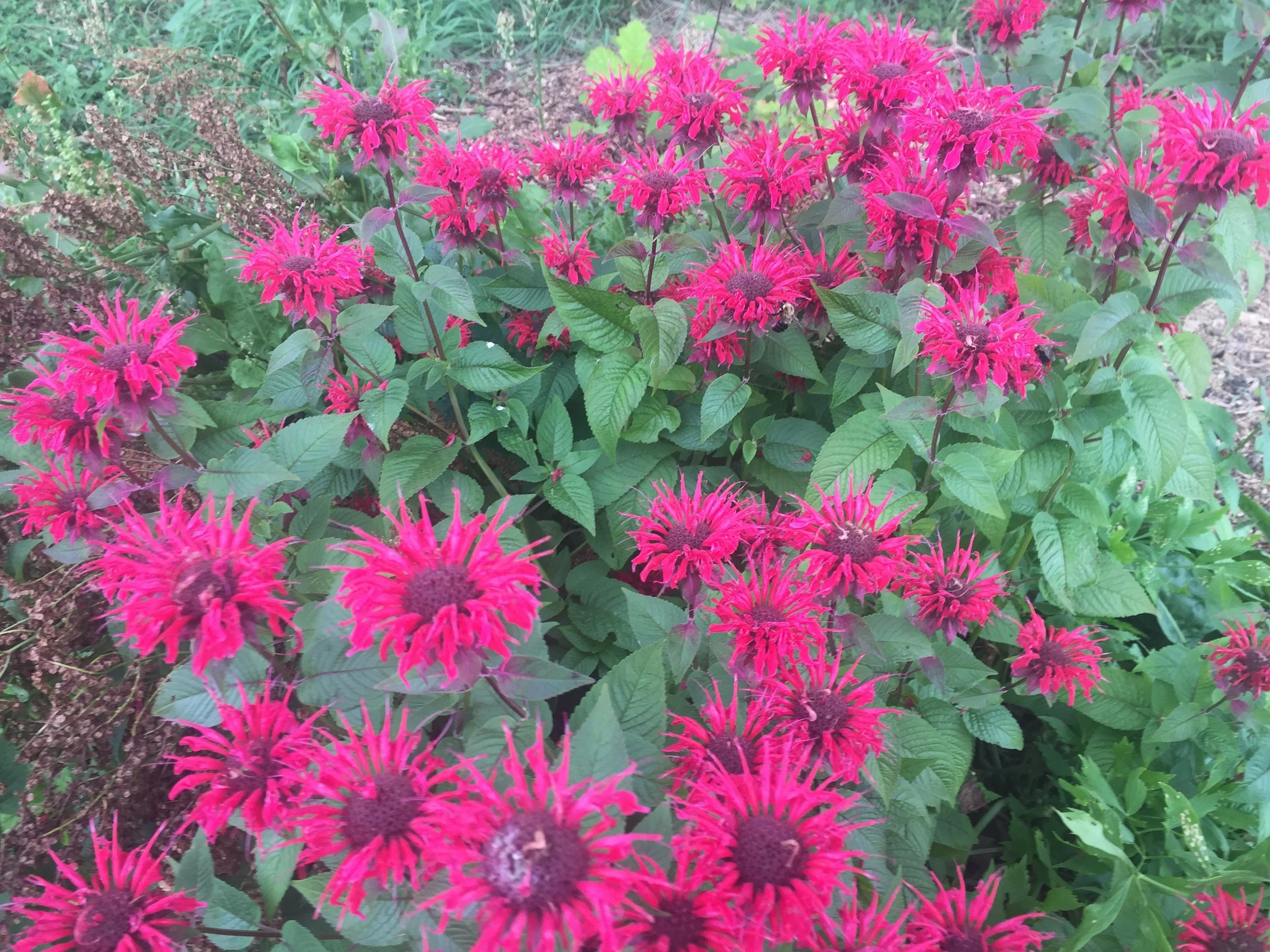Beebalm





Beebalm
Monarda spp.
Plant for hummingbirds, for inviting insects to keep down garden pests, and simply because we need more comforting beauty in our lives!
Hardy from Zones 4-9. Up to 4 feet tall and 3 feet wide.
We scatter and transplant Beebalm all along the stream and in forest gardens. We want to see the frilly bowl-like flowers everywhere, shades of reds and purples and pinks visited by winged friends like hummingbirds and pollinating insects, as well as bugs that feed on garden pests. The perennial plant likes moist meadows and sunny hillsides. Monarda is a member of the Mint tribe; like many genus names, Monarda comes from a European botanist who wrote about them.
But Beebalm is from Native America and has been used as medicine long before colonization. Blackfeet medicine-keepers have used the antiseptic property to make poultices for skin infections and wounds, included acne. Herbal teas treat mouth and throat infections as a natural source of thymol, which is the primary active ingredient in some modern mouthwashes. Beebalm is a carminative herb, which means they keep gas from forming or helps it get out, so the plant’s been used to stop excessive farting. The Tewa Pueblo in the Southwest have powdered a Monarda species, Wild Bergamot, to flavor meat, giving hints of Mint and Oregano. Powder also gets rubbed over sick heads to cure headaches, fever, and sore eyes. Ojibwe communities have put chewed-up leaves in their noses to ease headaches and seasoned warm baths for babies, similar to Ho-chunk (Winnebago) use in sweat baths. Menominee tradition steeps the leaves to settle inflammation and mucus buildup, Cherokee medicine calls for a warm poultice for headaches, and Oceti Sakowin lore boil together leaves and flowers for abdominal pains. Another species, Monarda didyma or Scarlet Beebalm, has been used for many of the same treatments, as well as soothing bee stings, hence the calming common name. Another common name, Oswego tea, comes from use by Iroquoian-speaking tribes (oswego meaning “pouring-out place” or river-mouth) in what’s now called New York. Settlers used Scarlet Beebalm as a replacement for black tea after the Boston Tea Party, when Europeans dressed up as Indigenous people to shift blame for their property destruction away from themselves.
We grow our Bee Balm from divisions and seed. Our plants are a mix of Monarda fistulosa (Wild Bergamot with purple flowers) and Monarda didyma (Scarlet Bee Balm with red flowers).